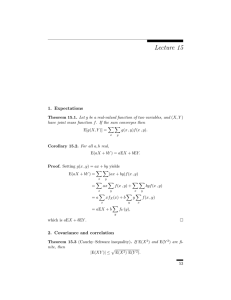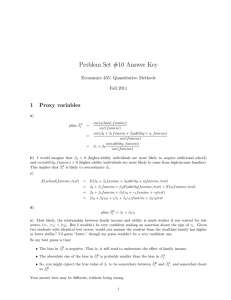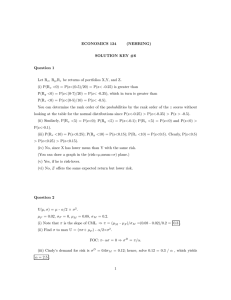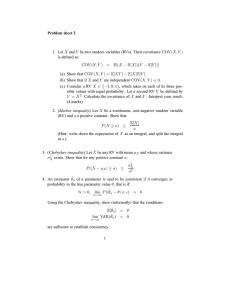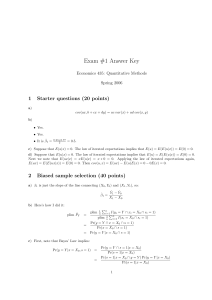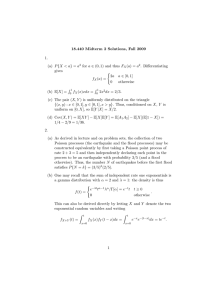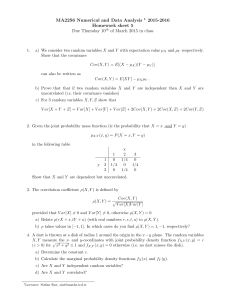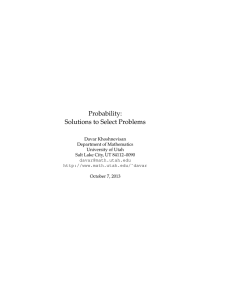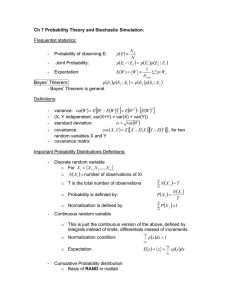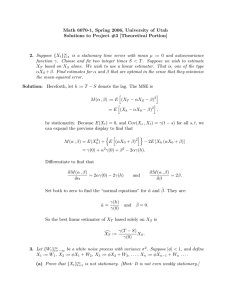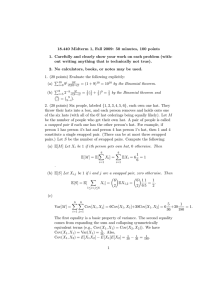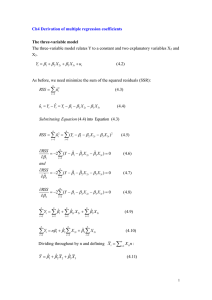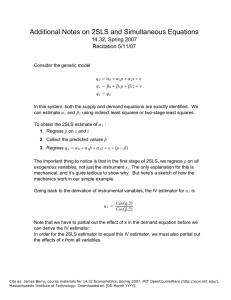Lecture 15 1. Expectations
advertisement
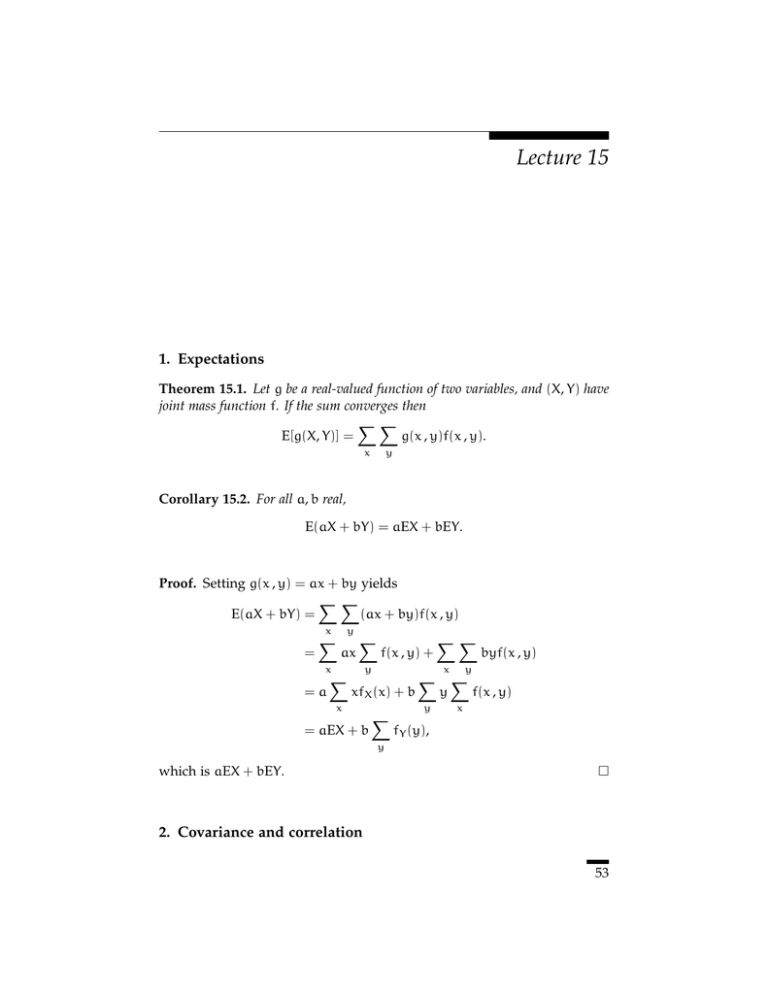
Lecture 15
1. Expectations
Theorem 15.1. Let g be a real-valued function of two variables, and (X, Y) have
joint mass function f. If the sum converges then
!!
E[g(X, Y)] =
g(x , y)f(x , y).
x
y
Corollary 15.2. For all a, b real,
E(aX + bY) = aEX + bEY.
Proof. Setting g(x , y) = ax + by yields
!!
E(aX + bY) =
(ax + by)f(x , y)
x
=
!
y
ax
x
=a
!
x
!
f(x , y) +
y
!!
x
byf(x , y)
y
! !
xfX (x) + b
y
f(x , y)
= aEX + b
!
y
x
fY (y),
y
which is aEX + bEY.
!
2. Covariance and correlation
53
54
15
Theorem 15.3 (Cauchy–Schwarz inequality). If E(X2 ) and E(Y 2 ) are finite,
then
!
|E(XY)| " E(X2 ) E(Y 2 ).
Proof. Note that
"
#2
XE(Y 2 ) − YE(XY)
"
#2
= X2 E(Y 2 ) + Y 2 (E(XY))2 − 2XYE(Y 2 )E(XY).
Therefore, we can take expectations of both side to find that
$"
#2 %
E XE(Y 2 ) − YE(XY)
"
#2
= E(X2 ) E(Y 2 ) + E(Y 2 ) (E(XY))2 − 2E(Y 2 ) (E(XY))2
"
#2
= E(X2 ) E(Y 2 ) − E(Y 2 ) (E(XY))2 .
The left-hand side is # 0. Therefore, so is the right-hand side. Solve to
find that
E(X2 )E(Y 2 ) # (E(XY))2 .
[If E(Y 2 ) > 0, then this is OK. Else, E(Y 2 ) = 0, which means that P{Y =
0} = 1. In that case the result is true, but tautologically.]
!
Thus, if E(X2 ) and E(Y 2 ) are finite, then E(XY) is finite as well. In that
case we can define the covariance between X and Y to be
Cov(X, Y) = E [(X − EX)(Y − EY)] .
(12)
Because (X − EX)(Y − EY) = XY − XEY − YEX + EXEY, we obtain the
following, which is the computationally useful formula for covariance:
Cov(X, Y) = E(XY) − E(X)E(Y).
(13)
Note, in particular, that Cov(X, X) = Var(X).
Theorem 15.4. Suppose E(X2 ) and E(Y 2 ) are finite. Then, for all nonrandom
a, b, c, d:
(1) Cov(aX + b , cY + d) = acCov(X, Y);
(2) Var(X + Y) = Var(X) + Var(Y) + 2Cov(X, Y).
Proof. Let µ = EX and ν = EY for brevity. We then have
Cov(aX + b , cY + d) = E [(aX + b − (aµ + b))(cY + d − (cν + d))]
= E [(a(X − µ))(c(Y − ν))]
= acCov(X, Y).
2. Covariance and correlation
55
Similarly,
$
%
Var(X + Y) = E (X + Y − (µ − ν))2
&
'
&
'
= E (X − µ)2 + E (Y − ν)2 + 2E [(X − µ)(Y − ν)] .
Now identify the terms.
!
